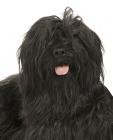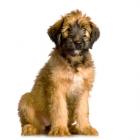Briard
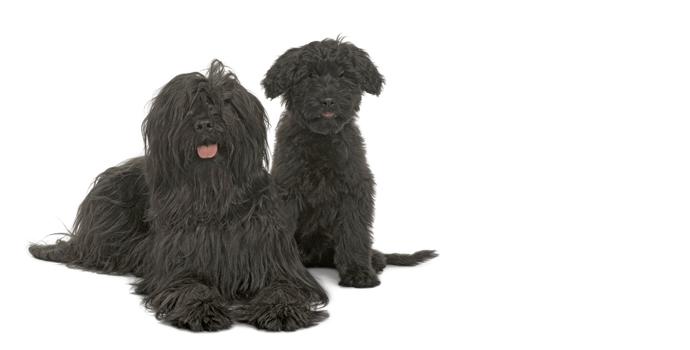
In my own words
Through my shaggy, rustic locks, by button nose and dark eyes peer beneath. I’m a 9-5 kind a dog, working long hours all day for the sheer love of it. I’ve been known to be a favourite of such figures like Napoleon who fell in love with my kind, my faithfulness, my willing to serve just like a solider to the army. I strike up amazingly devoted relationships with particular my master; this has helped over the many years of us working together on the farms, in the wars and in even more recently search and rescue teams. I always need a job to do to keep me entertained, satisfied and active. If this is not fulfilled I do have the tendency to become fearful, bored and uncontrollable, I’m not a small dog so can be un manageable for some people. Like most working types, close to nature I need my pack, I need to know where I stand, I need to be commanded and guided in order to reach my full potential. Thus making me your loving friend with a heart of gold, that will never under any circumstance leave your side.
My ideal owner(s)
Experienced
Active – Runners
Farmers
Loving
Family
What they say about me
Intelligent
Fearless
Lively
Protective
Shaggy
Loving
Faithful
Is this Briard for you?
Test your knowledge about the Briard
Information essential about the Briard
Breed Group – Herding/Working
SIZE
Height: Male: 23-27; Female: 22-25.5 inches
Weight: Male - 75-100 lbs. Female - 65 - 80 lbs.
Popularity:
Despite his very ancient history, the Briard was introduced into this country only in the late 1960’s with the first dog arriving from Ireland in 1966 and the first imports from France in 1969. The first ever litter in Great Britain was born in March 1969 from Irish imports and the second in November of the same year. The first Briard was shown in 1967 and by 1969 two Briards had qualified for Crufts. The breed then went from strength to strength and November 1973 saw the formation of the British Briard Club.
The breed is famously known for being owned by such historical figures such as Napoleon, Thomas Jefferson, Lafayette, and Charlemagne. With its heightened sense of hearing, this breed was often used by the French Army to search for wounded soldiers. Today, the Briard is an esteemed companion dog and continues to serve as a guardian and herder.
Breed History:
The Briard is an old French breed which goes back in history as far as Charlemagne, having been seen in tapestries of that period, history also attributes two Briards to Napoleon. Sometimes known in France as “Chien Berger De Brie” or sheepdog of Brie, this name is thought to have originated in one of two ways. The first explanation is that they originated in the ancient region of Brie, an environ of Paris. The more romantic alternative stems from an old legend of the middle Ages, which recalls the murder of Sir Aubry de Montdidier. His dog took it upon himself to relentlessly pursue the assassin, a man named Macaire. The King ordained that a judiciary duel should take place between man and dog. This strange conflict was fought out in 1371 on the Isle de Notre Dame, and the dog of which the description is very similar to that of a Briard, was the winner.
A wonderful working dog, the Briard is the most numerous of the French sheepdog breeds and has been used throughout the centuries as a shepherding dog, as well as a guardian of the flock and the homestead. With his size and substance he was well able to fight off wolves and other predators – even two legged ones! Due to their keen hearing and vast intelligence they were used during World War 1 as Red Cross dogs, sentry dogs and ammunition carriers. Consequently the end of the war the Briard sadly depleted population.
Character:
Briards are called "Hearts Wrapped in Fur." They love their people and are never far from you. It is so-o-o easy to love a Briard! They make the time spent raising and loving them so worthwhile. From Briard puppies to Briard adults, they are great dogs in the right home.
Briards are herding dogs. It is their natural instinct to herd that helps form their personality and character. Briards are bred to know where they belong, to be where they belong, to care for their flock and to protect their "flock". That flock can be sheep, people, and even other dogs. And the Briard version of caring can take many forms, some good, some challenging.
The Briard is a busybody. He thinks everything is his business, from the leaf falling off the tree across the street, to the refrigerator door opening. No one using the street or sidewalk goes unnoticed, and rarely do they go unannounced.
Full of fun and with a great sense of humour. A likening to clowns, because even if you have had a bad day, he will roll over into a position you have no option but to laugh at, truly a wonderful friend. But any dog is what you make of him, and with a Briard, who is intelligent, easy to train and quick to learn, you really reap the benefits of your labours. They are good at obedience and love agility
Temperament:
Briards come with many different personalities, but some traits of the Briard are common to all. They will always be near their people due to the long history and the relationship gained between Briard and man. They are very alert to their surroundings, and no one sneaks up to the front door. They think things through, and can come up with a different answer than their owners.
The AKC Standard uses the words "spirit and initiative, wise and fearless with no trace of timidity. Intelligent, easily trained, faithful, gentle, and obedient...” For an honest account as like with every dog and human they can come across as sometimes manipulative, pushy, dominant, stubborn, and independent as a few additional descriptive words for some Briards. By far though they can often be found to be extremely humorous and entertaining.
The Briard is lovely, elegant, and striking, and most people are first interested because of those good looks. Anyone thinking of living with a Briard has to remember that they were bred to work and think, often independently.
They were bred to be strong dogs, capable of controlling and protecting large flocks of sheep. That traditional strong personality still is present in many Briards. Others have been bred to have softer personalities. Some are sweet couch potatoes, and some clearly show that they would happily spend all day tending a flock of sheep with little or no human direction. Some have a strong desire to control their human "flock". Others strive desperately to please their owners.
Big or small, the Briard always believes it is a lap dog. Human contact is essential, and they will follow you from room to room. You never have to worry about where your Briard is. You just have to be sure you don't trip over him!
Raised properly, most do very well with children, although some are too high energy and exuberant for young kids. Their protective nature can take odd twists - they have been known to herd boisterous kids into a bedroom, and keep them there.
They are a very intelligent breed, good with children and responsive to firm handling and training. Briards can sometimes be seen as quite slow to learn but once they have grasped what is required of them, they never forget it. They are also very good at ‘trying it on’ and know exactly how far they can push the boundaries. Often described as a ‘heart wrapped up in fur’, Briards are extremely loyal to their owners and they love to be just with you. However, a word of caution - they are not big teddy bears – they are boisterous and unless a puppy is sensibly trained they will grow into an unmanageable adult dog that is the master rather than the other way round.
Conformation:
The Briard is a French sheepdog with a long, wavy coat. There are three coat colours – black, fawn and slate grey. The Briard is a big, rugged, sturdy dog, gay and lively with a fearless temperament but with no trace of timidity or
aggressiveness. Their muscular necks carry their heads with pride. In spite of all the hair they have around their eyes, they are very keen sighted! They move effortlessly and cover the ground well.
Colour:
Grey, black, or multiple variations of fawn.
Training:
The nature of some Briards is to be dominant, and unchecked dominance can lead to aggression. Like any dog, leadership and pack mentality must be nipped in the bud from a very early stage. Briards need to know their place in the pack with a firm owners who can train, socialize and exercise them enough to mentally satisfy them, keeping them entertained and active. If they ever sense their owner is letting up on them they can become very stubborn and fearful, resulting in unfriendly and uncontrollable. The combination of consistency, patience, love and a firm hand will all help achieve success.
Care:
All Briards need daily exercise, and if kept in a small house must be walked, and a safe place to run and romp will make for a happier dog. Can they be kept in small apartments, or in houses without fenced yards? Absolutely, but it takes a commitment of time and energy. Neither owner nor dog will be happy if a Briard is not given adequate exercise. Briards are people dogs. Briards left in a backyard with only occasional attention can become nervous, shy, or aggressive. Briards that are members of the family will shine.
The coat is what the casual observer usually remembers about the Briard. The coat of an adult Briard is generally at least six inches long over the shoulder.
Grooming is a big part of owning a Briard. Depending on the quality of the coat and the age of the dog, it can take from a few hours a week to a couple of hours a month. Plenty of brushing and combing of their coarse double coats is required to help limit shedding, to prevent matting and to keep the coat clean and tangle-free.
Another physical element that makes the Briard an interesting kind is that they have double dew claws on the hind legs and single dew claws on their front and these must be clipped from time to time.
Health:
In general, Briards are a healthy breed. Hip Dysplasia was common at one time but is now greatly reduced due to careful breeding. However, always insist on HD screening of parentage before purchasing a puppy. The most serious problem is bloat; the incidences of this occurring can be reduced with careful feeding and exercise programmes in place. Night blindness and certain heart and blood defects are also known.
General life span of a Briard is 9 - 15 years
You may also like:
If you like Briards, you may be interested in breeds of the same size »
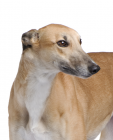
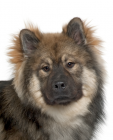
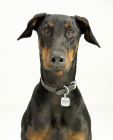
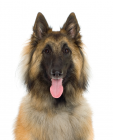
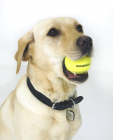
If you like Briards, you may like other breeds with similar characteristics »
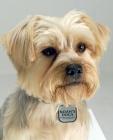
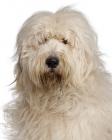
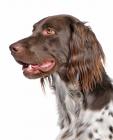
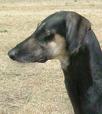
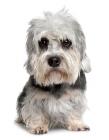
If you like Briards, you may be interested in these other working dogs »
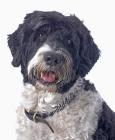
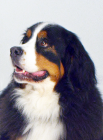
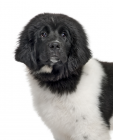
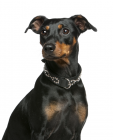
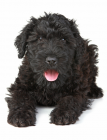
Advice on choosing your breed »
Find an animal shelter or rescue home where a Briard is waiting for a new home »
A Briard's intelligence requires a dedicated and equally intelligent owner. Since they are naturally protective they must be well socialized as young dogs with a master who they respect to teach them to happily accept the people and things that they meet in day-to-day life. They are NOT big Shih Tzu’s and they are NOT Labrador Retrievers with long hair. They were initially used to defend their charges against wolves and poachers and then later as boundary style herding dogs in France. They retain their instinct to guard their home and family. Due to this history, this early socialization and training are EXTREMELY important. Without socialization, they can become overprotective. Without a LEADER they can decide to take charge attempting to protect those that they think might be vulnerable.
If you don’t mind sparing time for his vigorous exercise requirements, frequent brushing and combing as lets face it Briards have a lot of hair, enough time to train and socialize him, allowing his herding, guarding ways then he is right for you. It is definite to say he would be well suited to an experienced handler who can show him a lot of love.
Be the first to rate this breed »
|
*PLEASE NOTE: All our breed profiles are general, and all dogs are individuals. Always talk to the breeders and meet the owners you are buying from. Try to meet the dog and its parents if it is a puppy in their home environment.








